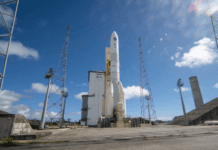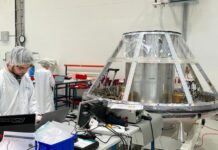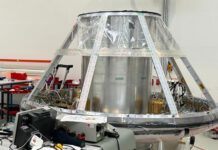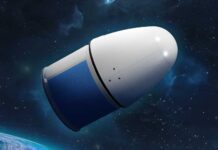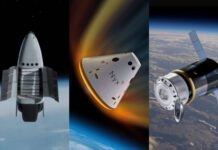
The Exploration Company has begun work on a reusable methane-powered staged combustion rocket engine that will be capable of producing approximately 200 tonnes of thrust. The endeavour is being co-financed by the French space agency CNES.
Founded in 2021, The Exploration Company has been developing a modular, reusable spacecraft called Nyx. The company is expected to propose a variant of this vehicle as part of the European Space Agency’s LEO Cargo Return Service initiative. With the announcement that the company will be developing a methane-powered high-thrust engine, it appears to be broadening its product offering.
The Exploration Company does, however, already have experience with the development of methane-powered reusable rocket engines. The company is currently developing an engine that will be used to power Nyx Moon, a variant of its reusable spacecraft that will be capable of delivering cargo and, eventually, maybe even crew to lunar orbit and the surface of the Moon. In November, the company completed the second test campaign of the engine’s thrust chamber. Over a series of eight tests, the engine was fired for a total of 560 seconds. The testing was performed at DLR’s test facility in Lampoldshausen.
According to L’Usine nouvelle reporting, the company is currently putting together a small team of propulsion systems experts to begin work on the engine, which it’s calling Typhoon. Teams involved in the project will be based in Bordeaux, Munich, and a soon-to-be-opened Turin office. In other words, France, Germany, and Italy, which are the three countries that have traditionally made the largest investments in European Space Agency launch vehicle programmes. This certainly appears to be the company setting itself up to be the beneficiary of ESA funding following the 2025 ministerial council meeting, utilizing the agency’s often criticized geo-return policy to its advantage.
In addition to its own capacity, The Exploration Company plans to call on industrial partners in the coming months to join the initiative. According to reporting, the undisclosed amount received from CNES will be utilized entirely for the project’s operations in France. Work to be done in Italy and Germany will be financed from The Exploration Company’s own coffers.
The company currently expects its Typhoon engine to be operational by 2030. With a similar performance to the SpaceX Raptor that will power the US-based company’s Starship vehicle, Tyhoon has the potential to offer Europe a new class of launch vehicles. However, it could also be used to power a partially reusable Ariane 64 equivalent heavy launcher. An engine enabling this kind of flexibility is not an idea that only CNES and The Exploration Company have broached recently.
In early December, ESA published a call for proposals for the development of a very high-thrust rocket engine that could be utilized aboard future heavy-lift launch vehicles. The project aims to develop an engine capable of generating at least 250 tonnes of thrust.

